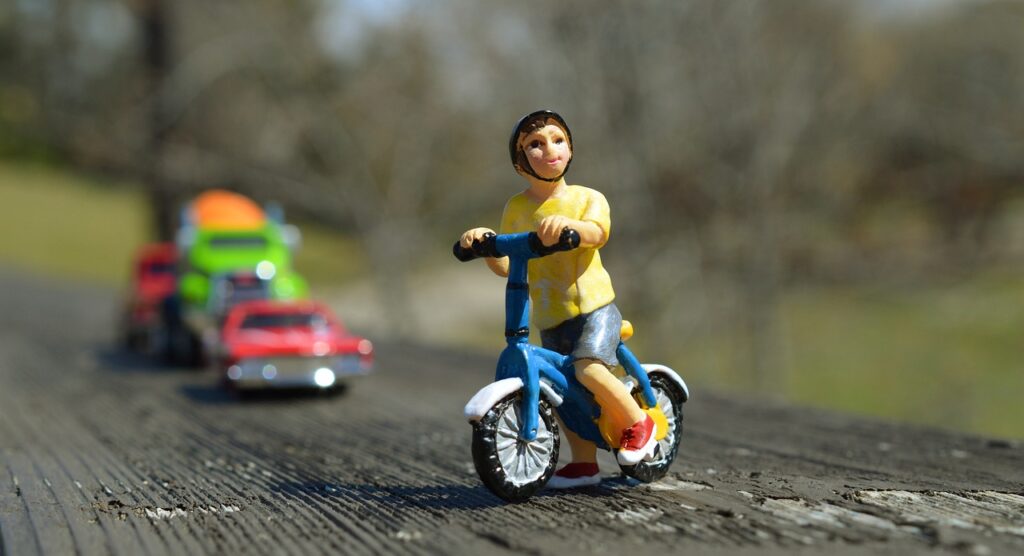A 48V 1000W ebike typically reaches speeds up to 28-30 mph. Speed varies depending on rider weight and terrain.
Embarking on an adventure or simply commuting, the potential of a 48V 1000W e-bike offers an exhilarating blend of speed and power. Electric bikes, or e-bikes, have surged in popularity, providing an eco-friendly alternative to traditional transportation. With a robust 1000W motor, these e-bikes deliver substantial torque, propelling riders to impressive speeds that can compete with urban traffic.
They strike a perfect balance for those seeking the thrill of speed without sacrificing the sustainable ethos of cycling. Opt for one of these powerful machines to enjoy a swift, efficient, and engaging ride, whether you’re tackling hills or cruising on flat roads. Embrace the future of cycling with a 48V 1000W ebike and transform your travel experiences.
What Powers A 48v 1000w Ebike
The heart of a 48V 1000W ebike is its robust powertrain, which draws energy from the battery unit. Ensuring considerable mileage and consistent energy output, the battery specifications typically highlight high-capacity cells capable of delivering the necessary voltage and wattage to sustain the motor’s peak performance.
The motor’s mechanics play a pivotal role in translating electricity into motion. An e-bike equipped with a 1000W motor benefits from a rapid power generation mechanism, making it ideal for tackling steep inclines and maintaining higher speeds with ease. Such capabilities empower the ebike to reach impressive velocities swiftly, illustrating the seamless synergy between the battery’s energy provision and the motor’s conversion of power.
Core Factors Influencing Speed
The weight of the rider and the load capacity of an ebike greatly influence its maximum speed. Heavier riders or additional cargo can slow down the bike, as the motor has to work harder to propel the additional weight. Conversely, a lighter rider might experience higher speeds due to less resistance and strain on the ebike’s motor.
Terrain and environmental conditions also play critical roles in determining an ebike’s speed. Riding uphill or against strong winds can significantly reduce speed, whereas a downward slope or tailwind can increase it. The type of terrain, whether it is smooth asphalt or rough off-road trails, affects the rolling resistance and consequently, the speed.
The design and aerodynamics of the bike are essential for speed. Sleek, aerodynamic designs can minimize air resistance, allowing the 48V 1000W ebike to reach higher speeds. Features like a streamlined frame and positioning of components can influence how the air travels around the bike, impacting its top speed and efficiency.
How Fast Is A 48v 1000w Ebike” Unveiled
A 48V 1000W ebike generally reaches a top speed of 28 to 30 mph (45-48 kph), depending on factors such as the rider’s weight, terrain, and tire pressure. This speed surpasses that of many urban traditional bicycles, providing a swift commute. Additionally, it significantly outpaces lower wattage ebikes, which typically peak around 20 mph (32 kph).
| Comparison | 48V 1000W Ebike | Traditional Bicycle | Lower Wattage Ebike |
|---|---|---|---|
| Top Speed | 28-30 mph (45-48 kph) | 10-15 mph (16-24 kph) | 15-20 mph (24-32 kph) |
| Power | High | Human-dependent | Moderate |
Riders seeking even greater speeds can do so by customizing their ebike’s settings or by adding modifications, keeping in mind the legal speed limitations in their area.
Regulations Impacting Ebike Speeds
Ebike speeds are heavily influenced by country-specific regulations, which dictate the maximum power output and speed an ebike can have to be considered street-legal. For instance, in the United States, the Consumer Product Safety Act defines a ”low-speed electric bicycle” as having a top-assisted speed of 20 mph (32 km/h) with a motor of less than 750W. Crossing the Atlantic, European regulations under EN15194 standard cap ebike speeds at 25 km/h (15.5 mph) with a maximum continuous rated power of 250W.
These regulatory frameworks directly affect how manufacturers set up their ebikes, often programming them to comply with the local maximum speed limits. Yet, a 48V 1000W ebike possesses potential speeds that exceed these thresholds. As a result, many ebikes are equipped with limiters to ensure compliance, but they can be adjusted for higher speeds if used off-road or in private settings, where regulations do not apply.
Gearing And Efficient Use
Gearing ratios significantly influence an ebike’s performance, including a 48V 1000W model. Optimal gear ratios ensure that the motor operates within its efficiency sweet spot, enabling the ebike to reach its maximum potential speed while conserving energy. This crucial aspect of ebike design allows riders to exploit the full power of the motor without unnecessary strain, which could lead to reduced performance and increased wear.
To maintain optimal speed and performance, riders should follow certain practices. Regularly checking and adjusting the gear settings in accordance with the terrain and riding conditions is vital. Keeping the motor’s RPM within the ideal range prevents power losses and ensures smooth and efficient ebike operation. Furthermore, consistent maintenance of the drive chain and gears will prolong the lifespan of the ebike components, sustaining an excellent riding experience over time.
Common Speed Experiences
A 48V 1000W ebike typically reaches top speeds between 28 to 30 mph (45 to 48 km/h) on flat ground, depending on factors such as rider weight and road conditions. Commuters in urban settings may find this speed sufficiently swift for bypassing traffic congestion, ensuring a timely and efficient ride. It’s important to note that these speeds are subject to local laws, which may restrict the maximum speed of electric bikes on public roads.
For off-road enthusiasts tackling inclines and rough terrains, the bike’s performance will differ. The robust 1000W motor provides ample power, allowing riders to maintain a steady pace even when ascending hills. However, the actual speed will likely decrease on inclines depending on the steepness and the rider’s input. Riders should anticipate a lower average speed in these scenarios, though the strong torque output will assist in navigating challenging topography with ease.
Upgrades And Modifications
Upgrading your ebike with aftermarket parts can significantly impact its speed. Common enhancements such as performance controllers and upgraded batteries have the potential to boost the ebike’s power, thus increasing its velocity. Installing a higher-rated motor can also contribute to achieving greater speeds. It’s critical to choose components that match the ebike’s specifications to maintain its structural integrity.
Quality tires designed for higher speeds enhance traction and stability, promoting a safe increase in performance. Improved braking systems ensure safety isn’t compromised with the added speed. For riders looking to extract that extra bit of pace from their ebike, proper tuning and careful selection of components such as lightweight frames and aerodynamic designs can make a notable difference.

Credit: www.ebay.com
Preserving Your Ebike’s Speed
Maintaining the peak performance of a 48V 1000W Ebike requires regular attention to both the battery and motor. A crucial component to this is routine checks, which include inspecting the tire pressure, brakes, and chain lubrication.
Ensuring your battery is charged and stored appropriately will significantly extend its lifespan. It’s best to keep the battery between 30%-90% charge and avoid depleting it completely. To maintain motor efficiency, avoid overloading the bike and consistently clean and check for debris or damage.
- Tire Pressure: Proper inflation reduces drag and strain on the motor.
- Brakes: Regularly check and replace brake pads to ensure safe stopping power.
- Chain: Maintain lubrication to prevent excess wear on the drivetrain.
- Battery Charging: Keep within optimal charge levels, and avoid full discharges.
- Motor Maintenance: Clean regularly and inspect for signs of wear or damage.
Frequently Asked Questions Of How Fast Is A 48v 1000w Ebike
What Is The Top Speed Of A 48v 1000w Ebike?
A 48V 1000W ebike typically reaches a top speed of 28-30 mph. Factors like rider weight and terrain can affect the actual speed.
How Does Motor Wattage Affect Ebike Speed?
Motor wattage directly impacts the ebike’s power and speed. A 1000W motor provides strong acceleration and can maintain higher speeds compared to lower-wattage motors.
Can I Increase The Speed Of My 48v Ebike?
Increasing the speed beyond the designed limit of a 48V 1000W ebike might be possible through modifications. However, it can lead to safety risks and may be illegal in some regions.
How Far Can A 48v 1000w Ebike Go On One Charge?
The range of a 48V 1000W ebike varies between 25-50 miles per charge. It depends on factors such as battery capacity, riding conditions, and rider habits.
Conclusion
Wrapping up, a 48V 1000W ebike offers an impressive speed that caters to thrill-seekers and efficiency-minded commuters alike. Ideal for diverse terrains, this electric bike can reach top speeds that make every ride an adventure. Discover freedom and pace with this robust ebike model, and transform your travel experiences.



